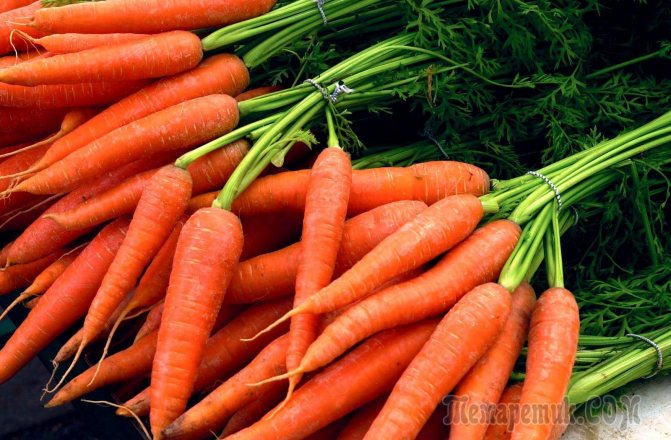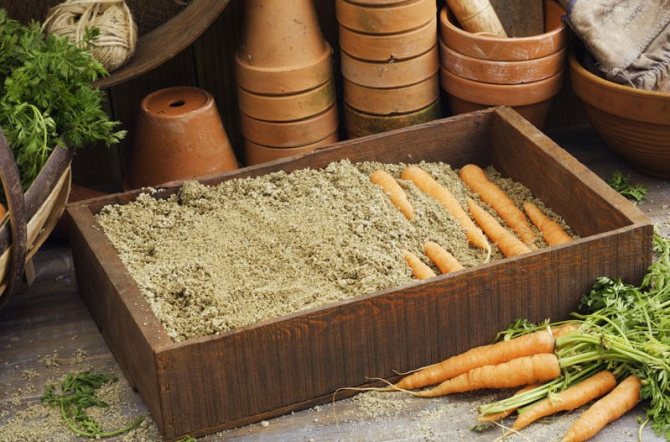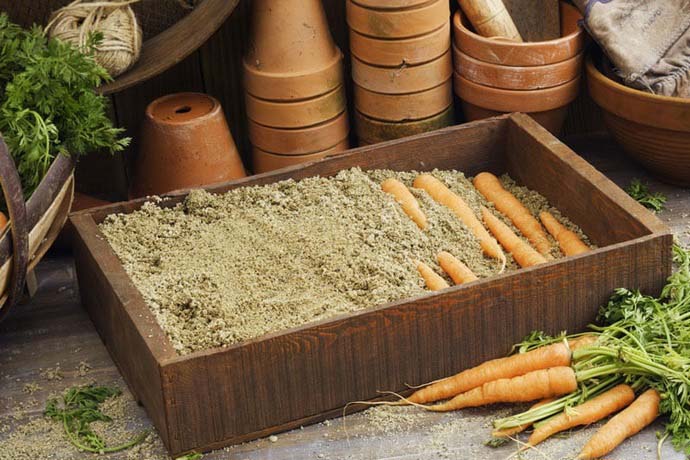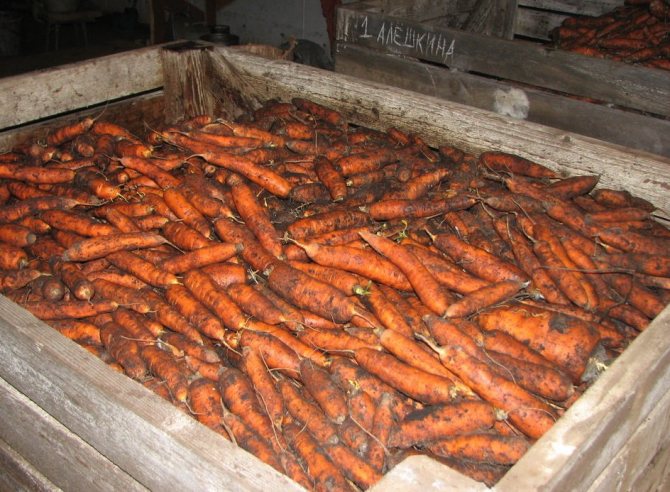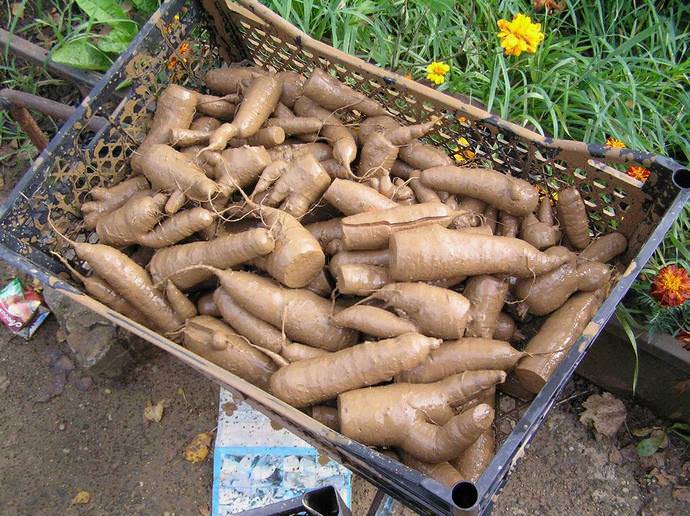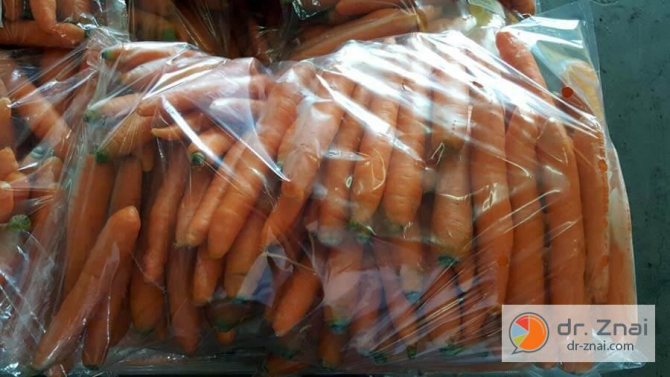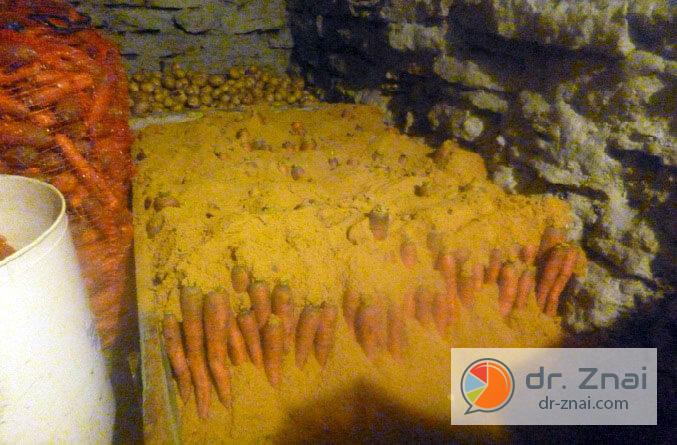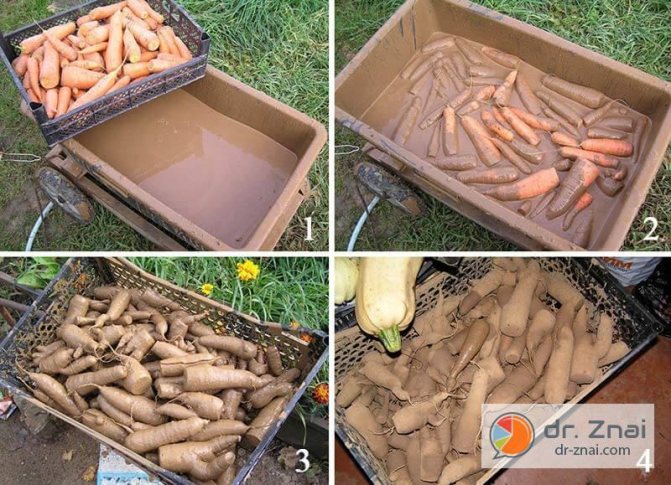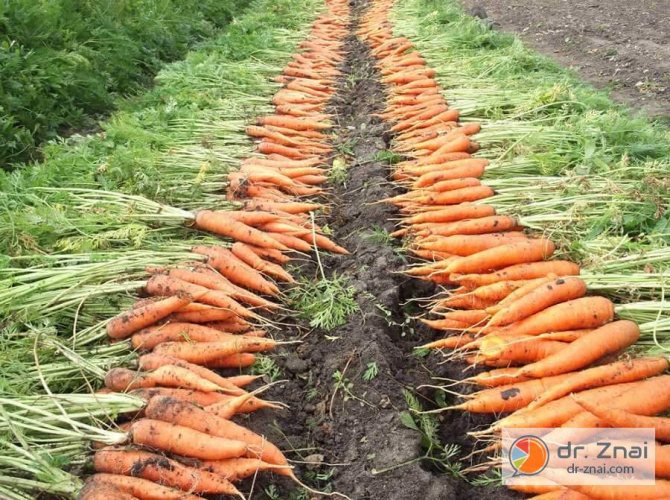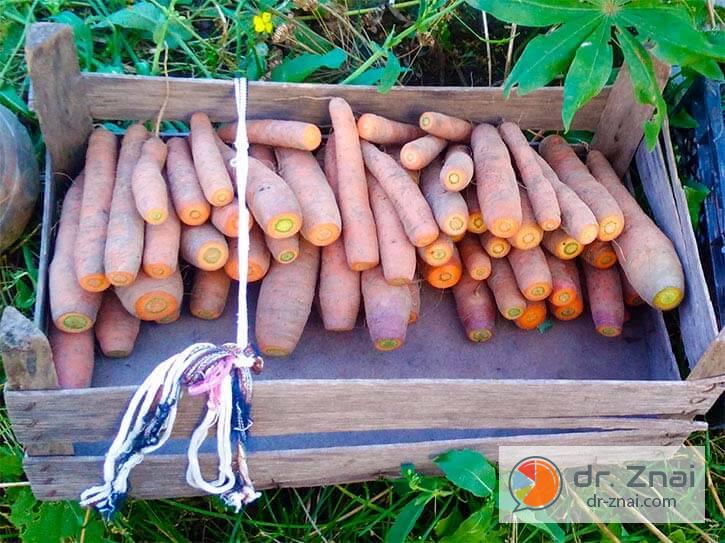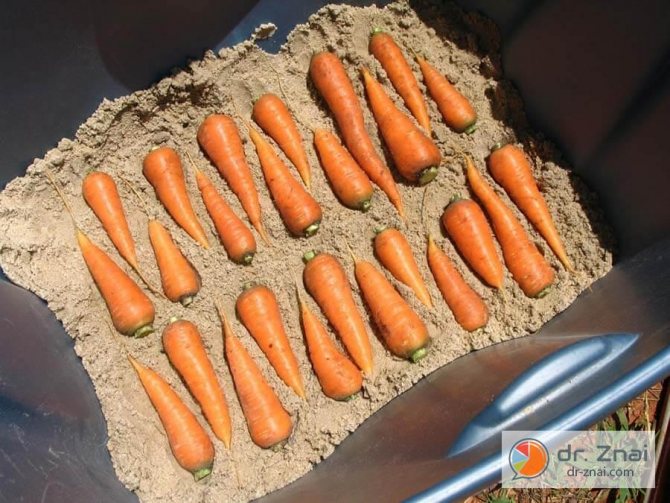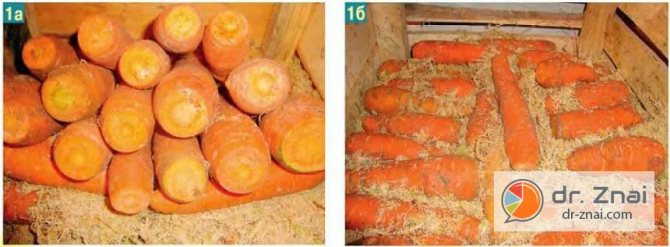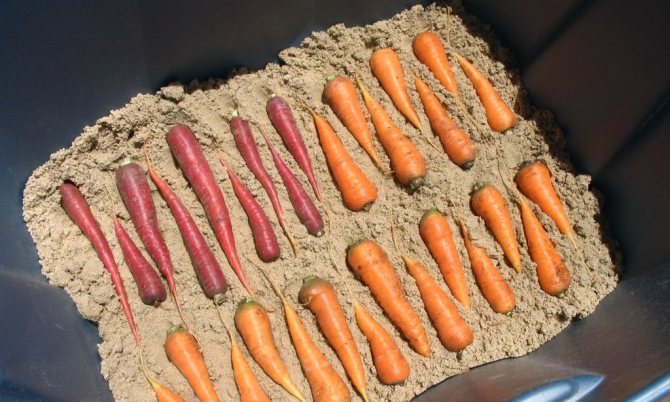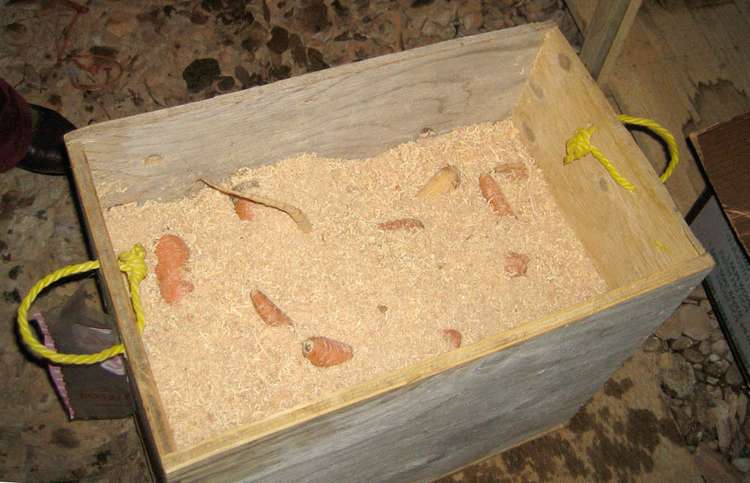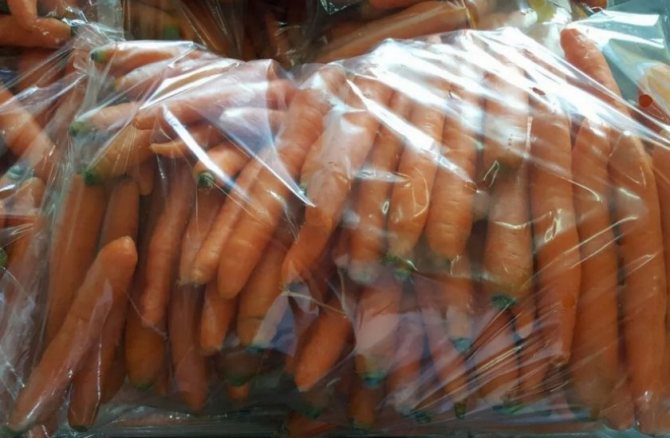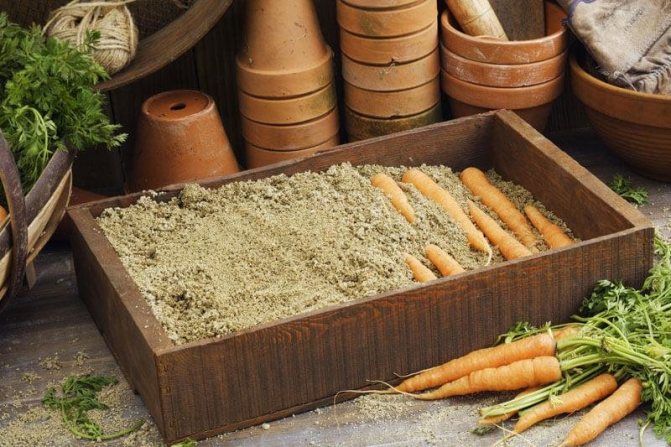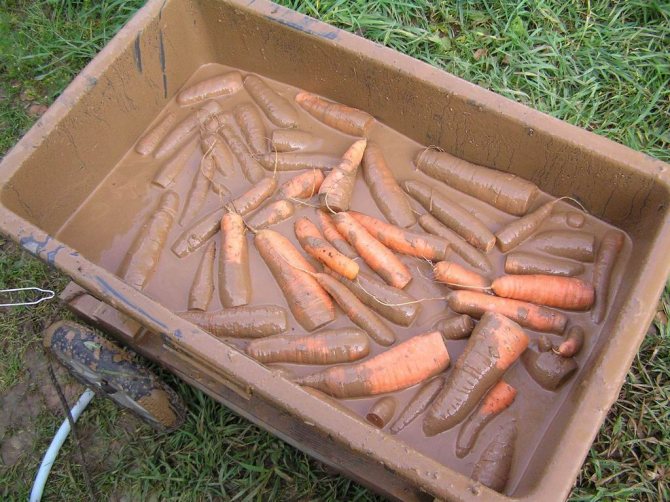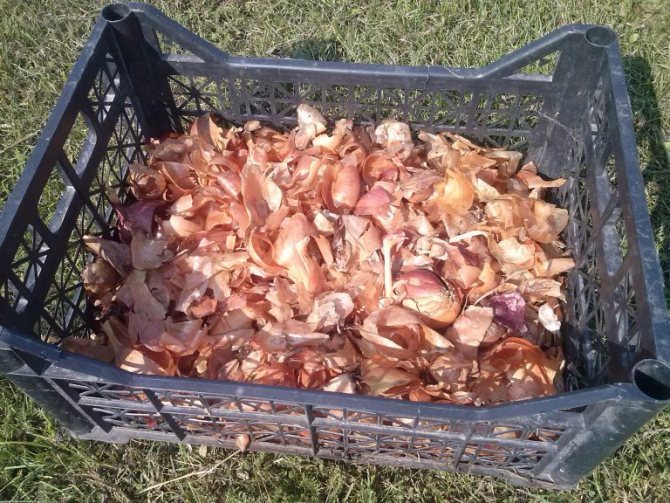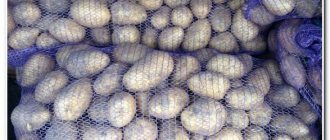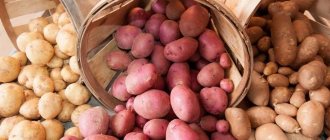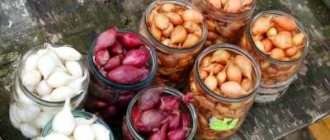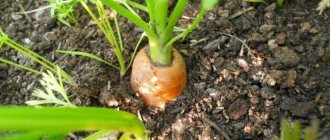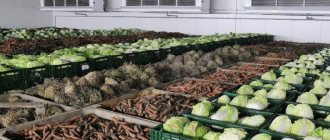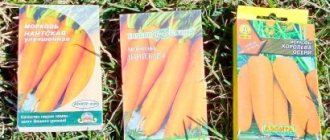Vegetable growing »Carrots
0
838
Article rating
The main task of every gardener is to provide optimal conditions for long-term and high-quality storage of the crop. Storing carrots for the winter in a basement or cellar is done in several ways.
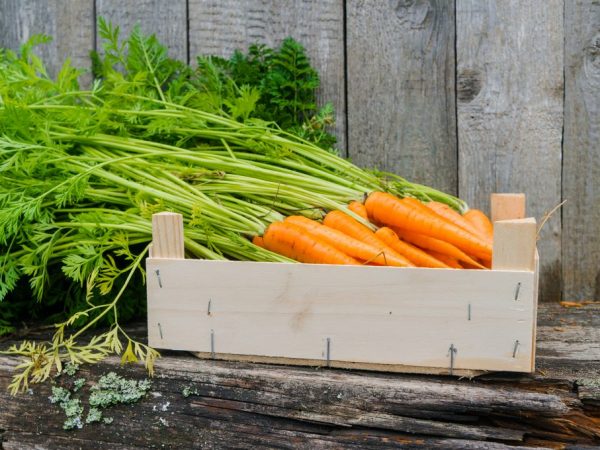
Ways to store carrots for the winter
Is the subfloor, basement suitable for storage until spring?
A clean and well-ventilated cellar is the best place to store carrots. It has enough space to accommodate the entire crop.
Maintaining a stable temperature and humidity will extend the shelf life of vegetables.
Optimum temperature and humidity


Carrots will not freeze and germinate if stored at 0 ... + 2 degrees. An increase and decrease in temperature within 1-2 degrees is not critical.
It is important not to allow its constant drops. A one-off leap is not a big deal, but regular changes will cause vegetables to rot, sprout, or dry out.
Air humidity should remain within 95%... The root crop is 90% water, therefore, under inappropriate conditions, it loses it very quickly.
If it has been noticed that vegetables are starting to dry, you need to increase the humidity in the room. A hygrometer is used to measure this indicator. Read more about the temperature storage conditions for carrots here.
Features of preserving a vegetable for the winter
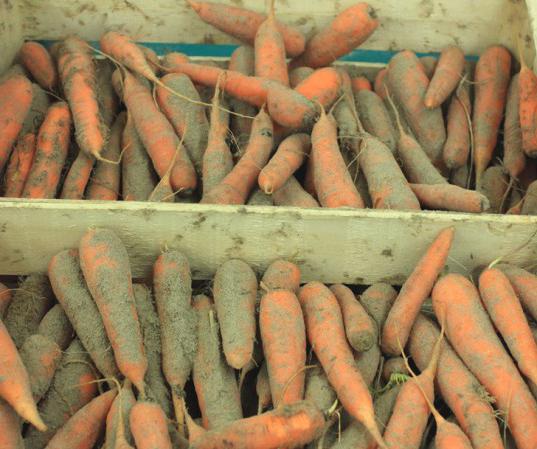

Carrots are more likely to rot than other vegetables.
In order for the safety in the cellar to be of high quality until spring, you need to work hard. The fact is that carrots are more susceptible to bacteria penetration than other root crops, such as beets or potatoes... This is due to the skin, which is very thin and does not protect the product from harmful microorganisms. Therefore, in order to properly store carrots in the cellar, you need to master a few tricks.
Storage periods
The main conditions for the long-term preservation of the freshness of the product are humidity, temperature and quality preparation... Subject to the specified conditions, the shelf life of the product can be from 4 to 12 months. If the temperature deviates from the norm by literally a couple of degrees, the shelf life will immediately halve.
There are several ways to provide a comfortable storage environment for the harvest:
- packing the crop in polyethylene bags (freshness is maintained for 3-7 months);
- stacking in containers without filling (carrots are stored for more than 4 months); instillation in clay, dry chalk, sawdust or onion husks (record freshness up to 1 year);
- laying the root crop in damp sand (stored for more than 7 months).
The optimal method is chosen solely for personal reasons of comfort and based on their own capabilities, the availability of tools. In the cellar, long-term storage should be thought out in advance, materials are provided before the harvest is laid.
Temperature regime


The storage temperature of carrots and beets is the same
In the cellar where vegetables will be stored, you need to ensure a cool temperature. Optimum performance should stop at 0-2 degrees. The room should also have moderate but regular ventilation. Humidity in the subfield is allowed no more than 97%... At the slightest deviation from the indicated indicators, the vegetable may rot, dry out or germinate carrots.
How to trim the tops correctly?
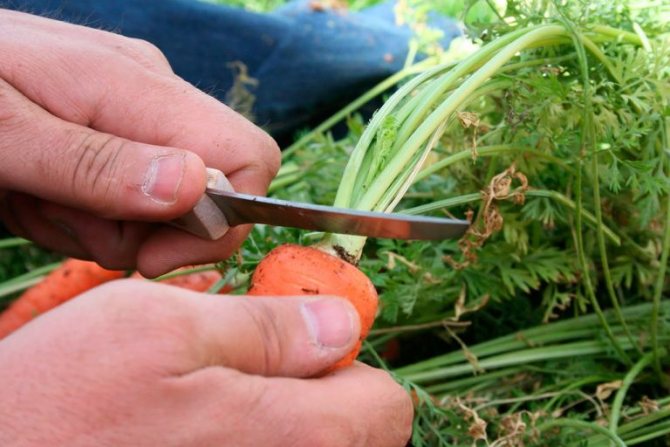

Do not cut off the tops completely to the fruit.
The carrot variety plays an important role. To preserve carrots for the winter, it is better to plant varieties Moscow Winter, Shantane, Vitamin or Skorospelka Nantes. Exceptionally hard and whole fruits are laid in the cellar, without damage to the skin, as well as other external defects. The tops must be removed from the root crop.
The condition for proper storage is not tearing off the tops, but cutting it off with a sharp knife. Without fail, leave 2-3 mm of greens so that the carrots do not rot.
Preparation
Preparing carrots for storage should begin in spring, when choosing seeds for planting. About a month before harvesting, you need to start processing the premises... When the cellar is ready, you can pick vegetables that also require some processing.
Read more about preparing carrots here.
Variety selection
Late-ripening and mid-ripening varieties that are harvested in the second half of autumn are suitable for storage. These root vegetables can stay fresh for 7-10 months.
You need to choose the following seeds for planting:
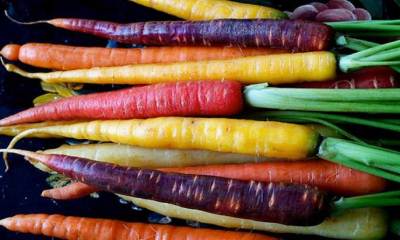

Autumn Queen;- Flaccoro;
- Dolyanka;
- Samson;
- Chance;
- Nantes;
- Vitamin;
- Moscow winter, etc.
You cannot mix different varieties with each other. They must be kept separate. First of all, they consume mid-ripening, and then late-ripening carrots. The best varieties of carrots for storage are described in this article.
How to prepare vegetables correctly?
If a crop that has not been previously prepared is lowered into the cellar, it will quickly deteriorate. To keep the carrots fresh for as long as possible, a number of conditions must be met:
- You need to start digging carrots in dry, sunny weather. When removing root crops from the ground, act carefully, trying not to damage them with a shovel.
- The dug carrots are laid out on the garden bed for primary drying. After 2 hours, the remains of the soil are gently shaken off from it, but you do not need to be too zealous.
- The tops are cut almost to the point of growth, leaving a shoot up to 2 mm long. A sharp knife is used to remove the greenery.
- Vegetables are removed for temporary storage in a warm room, for example, in a pantry. After 5-7 days, you can assess their condition, sort out rotten and spoiled fruits.
- After completing the preparation, the vegetables can be lowered into the basement.
Violation of the integrity of the fetus is the gateway for infection. Even one damaged carrot can spoil most of the crop.
Premises
Proper preparation of the cellar is the key to the successful storage of carrots. Action plan:


Ventilate the room. For this, the cellar is left open for 7-14 days. There should be no foreign odors in it.- Provide fresh air. This is only possible with well-functioning ventilation.
- Disinfect all surfaces. The walls must be treated with a solution of 2% bleach, which prevents the growth of microorganisms.
- Whitewash the walls. Whitewashing is started 14 days after disinfection. For 1 sq. m. leaves about 0.5 liters of solution.
- Process storage containers. There should be no signs of mold growth. It is recommended to place the boxes in the sun to provide additional drying and disinfection.
Preparatory activities take not a single day. You need to start implementing them in advance, about a month before lowering the crop into the cellar.
Proper cleaning and drying of carrots
Traditionally, late-ripening varieties are grown for long-term storage, in which the growing season (development time) is more than 120 days, you can also use mid-ripening ones - the most popular in private farms, but we will talk about choosing a variety in the final part of the material.
Harvesting carrots is best in dry, warm weather, since roots removed from dry or slightly damp soil will only need to be slightly dried. You need to dry the carrots until they are laid in the cellar for storage. Harvesting in the middle lane can begin in mid-September. The season ends, as a rule, in mid-late October, which largely depends on the number of sunny days, because carrots can be described as a long-day plant, the photoperiodism of which requires more than 12 hours of light for successful ripening. The first light freezes of carrots are not scary, so you don't have to worry about it.
It is better to dig up carrots with a pitchfork, holding each root crop by the tops, but you can also use a garden trowel. It is better not to use a large shovel, or just dig in the ground a little and carefully pull out the roots. If the ground is loose and dry, this will be easy enough.
When collecting, try not to damage or scratch the carrots, since if the skin is damaged, the vegetable will be stored poorly and will quickly rot.
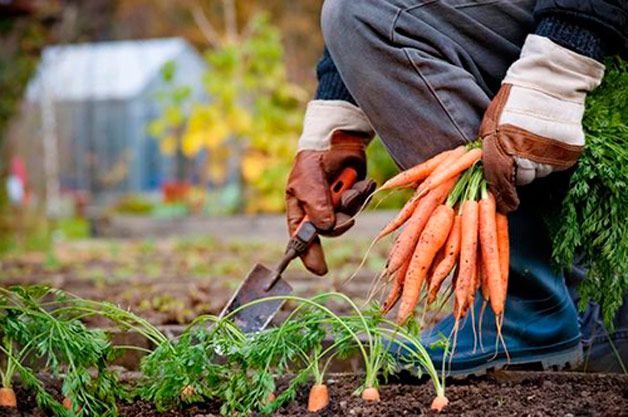

Dig up the carrots carefully so as not to damage the peel.
In good weather, it is enough to spread the harvested crop outdoors and dry for several hours. If you are unlucky with the weather - it is damp and raining outside - the carrots need to be collected and evenly spread out to dry in the house or in the garage. We recommend spreading the carrots in one layer on a dry mat. It is advisable that the individual vegetables do not touch each other. Raw roots need to be dried for several days - this is the so-called quarantine period.
After the carrots have dried, the following manipulations must be performed with them:
- We cleanse the excess earth. After the moisture has dried, you need to carefully clean the roots of dirt. If the soil on your site is clayey, and the clods of earth are dry, let them remain.
- We select root crops damaged during harvesting. Only healthy, whole and strong vegetables should be placed in the cellar for storage. If the peel of the carrot is damaged, pathogenic microbes will instantly penetrate there and the process of decay will begin. It is common knowledge that one spoiled root vegetable can infect everyone around you. Therefore, the stage of sorting carrots should be given special attention. Take the rejected vegetables home and put them in the refrigerator for speedy use, and if you come across cracked root vegetables, but these cracks are dry and not suspicious, they can be stored, however, you still need to use them first.
- We sort the carrots by size - separate the small ones from the large ones. First, small vegetables will be eaten, then medium, then the largest.
- We remove the tops. Use a sharp knife to cut the tops at a distance of 1-2 mm from the root crop itself.
Sometimes carrot tops are cut off even before harvesting (1-2 weeks), but whether such a method is justified is a big question, and it is much more convenient to pull root crops out of the ground, holding on to the tops.
Now our carrots are ready for storage, and we move on to the next step. An ideal place for winter storage of root crops is a basement or cellar.
What is better?
The good thing about the cellar is that you can store the harvest in it in almost any container. The most popular ways:
- In boxes (plastic or wooden)... The container is filled with any suitable material. It can be sand or dry sawdust, which is poured over vegetables so that they do not come into contact with each other. Shelf life - 7-9 months for sand, up to a year - for sawdust.
- In enamel pans... A prerequisite is the integrity of the container. There should be no chips or rust on it. Vegetables are stuffed into a saucepan tightly, exposing them in an upright position. When it is full, cover it with a paper towel and close it tightly. Without sprinkling, carrots will stay fresh for up to six months.
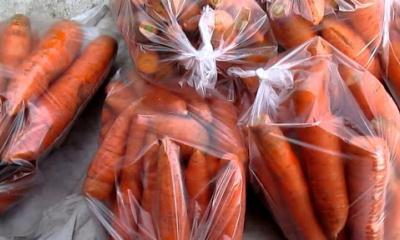

In fabric bags... Sprinkle the roots with any suitable material.You can use onion or garlic hulls to help retain moisture.
Fill the bag 1/3 with vegetables, tie it and put it in a suitable place. Shelf life - up to six months.- In plastic bags... This is one of the most popular storage methods, as vegetables do not rot, dry or wither in the film. No more than 5 kg of root vegetables should be placed in 1 bag.
The container is tied, but several holes are first made in it so that condensation does not accumulate inside. During storage, vegetables will emit carbon dioxide, which, in low concentration, helps to maintain their freshness.If the outflow of air is not ensured, then the level of carbon dioxide will rise to critical levels and the carrots will begin to deteriorate. The bags can be replaced with plastic wrap. The shelf life is about 5 months.
- In paper... Each root vegetable is wrapped separately in clean sheets, without applied typographic or watercolor paint. Store carrots in open boxes.
As a material for pouring root crops, you can use:
- Sand. It should be clayey, not riverine. Before backfilling, it is slightly moistened. Take 0.5 liters of water for 1 bucket.
- Coniferous sawdust.
- Moss.
Subject to all conditions, carrots will lie in the cellar for six months or more.
Better storage methods
The cellar and basement are the best places for winter storage, because it is there that it is easiest to maintain the set temperature and humidity. The cellar should not freeze through during the winter. In good conditions, carrots can be safely stored for a whole year, until the next harvest, and you will have the opportunity to regularly receive fresh vitamins from your own garden to your table.
To understand how to store carrots in the cellar correctly, check out the following popular methods:
- Wooden boxes with a lid are one of the easiest ways. Carrots are simply folded neatly into boxes made of wood or thick cardboard. The boxes are closed with a lid and placed in the cellar at a distance of 10-15 centimeters from the walls. Sometimes the walls can become damp, and moisture should not get into our boxes. It is better not to put them on the floor, but to use a small stand. There is no need to make holes in the boxes, they must be tight enough. This storage method is quite compact and will allow you to place a significant amount of root crops even in a small cellar. Try to put no more than 20 kg of carrots in one box.
- Onion peel. Do not throw away the husks that remain in large quantities from onions. Fold them in large bags and place the carrots in the same place. The husk, on the one hand, will take away excess moisture, and on the other hand, it will protect root crops from decay and reproduction of microorganisms. Try to coat each carrot in the husk, but you can just sprinkle it on separate layers. Tie the bags and lower them into the cellar or underground.
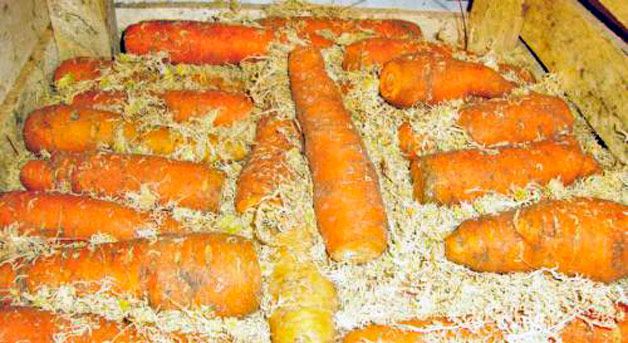

Storage in coniferous sawdust.Coniferous sawdust. In order to use this method, you need to sprinkle the root crops with sawdust from coniferous wood. Phenolic substances contained in needles will protect root crops from rot and disease. In this case, you can fold carrots into boxes from method 1 or any other container. You can simply put sawdust on the shelves in the cellar, spread root crops on them and sprinkle on top with another layer of sawdust. Sawdust should not be poured on the floor or close to the walls of the cellar.
- Pyramids covered with sand. With this storage method, a thick layer of sand is poured onto the floor or shelf of the cellar. The carrots are laid out in a row and covered with the next layer of sand. The second row of carrots is placed on the first in a checkerboard pattern. A layer of sand wakes up again, and so on. The pyramids should not exceed 1 meter in height. The sand for this method should be slightly wet, closer to dry. If the sand is completely dry, it should be periodically sprayed with water from a spray bottle to prevent the carrots from drying out.Root crops should not touch each other. Sand before use, it is advisable to sift and calcine for disinfection.
- Wet sand and chalk. It is necessary to mix clean, slightly damp sand with chalk powder. Pour this mixture into a tight wooden box. Place the carrots in the sand with the thick end up, sprinkle on top. Chalk will prevent bacteria from multiplying and will keep the carrots fresh and tasty for a long time.
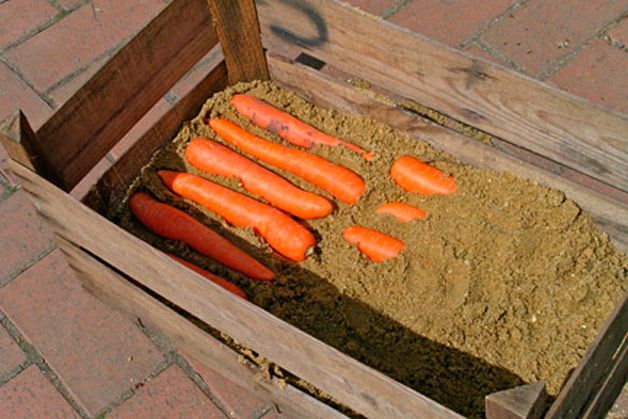

Laying root crops in a box of sand.Chalk solution. Chalk must be diluted with water to a homogeneous liquid state. Each root vegetable is moistened in this solution, dried and stored. You can simply "powder" the carrots with dry chalk powder. For 10 kg of carrots, you need about 200 g of chalk. The alkaline properties of chalk do not allow microorganisms to multiply.
- A shell made of liquid clay. A rather messy storage method, but one of the most efficient. Therefore, if the carrots in your cellar rots and spoils all the time, use them, you will not regret it. Before laying root crops in the cellar, dilute the clay with water in a bucket until a uniform flowing mass is formed. Dip each carrot there and dry. The clay should completely cover the root crop. Once dry, lower the carrots into the cellar and arrange them in boxes or baskets. The lid does not need to be covered.
- Plastic bags. Not the best way, but if there is no other storage option, pack dry roots in tight plastic bags and lower them into the cellar. The bags should be placed on a shelf or on a small stand. Several holes are made in the bottom of the bag through which the resulting condensation will drain. The bag is not tied.
How to process?


Most often, carrots are treated with clay before being sent for storage. This prevents the process of its germination and wilting. There are two uses for clay: pouring and dipping..
For pouring, ½ buckets are filled with clay, which is diluted with water and left for 12 hours.
When the material swells, it is thoroughly mixed, water is added and again left for a day. The procedure is repeated for 2-3 days. The clay must be brought to the consistency of thick sour cream.
The bottom of the boxes in which the vegetable will be laid is covered with foil... Place the roots so that they do not touch each other. From above they are poured with clay. When this layer dries, carrots are again laid on top of it and again poured with clay. The procedure is repeated as many times as necessary.
The second option is dipping carrots in clay. It should be so thick that it does not run off the roots. The moistened carrots are dried and placed in boxes. It will not deteriorate, since each instance will be reliably protected by a dried carapace.
Clay is an environmentally friendly material that does not contain impurities harmful to humans.... Its use can increase the shelf life of the crop up to 8-10 months. Vegetables must be thoroughly rinsed and peeled before eating.
Instead of clay, you can use a solution of chalk and water. Each carrot is dipped in the prepared composition and sent to boxes for storage.
Another option is the use of paraffin. Root vegetables must be dipped into a hot mass. To give them elasticity, you can melt a small amount of beeswax in paraffin.
All of these methods are safe. Substances contained in paraffin, clay and chalk solution do not penetrate vegetables. Therefore, after washing and removing the skin, they remain edible.
Optimal storage conditions
Basic biological processes continue in vegetables during storage.
Carrots in winter:
- Continues to lose moisture. It is more pronounced in damaged, small, early maturing root crops. The process becomes more active in the case of constant air circulation.
- Breathes. This leads to a loss of mass. Respiratory intensity is higher in damaged vegetables.
- There is a breakdown of organic compounds, vitamins. So the carrots become soft during storage, and may acquire a bitter taste. The main reasons for this: violation of the conditions of cultivation, pests.
The following storage conditions for carrots must be observed:
- The room should not freeze in winter.
- Maintain the optimal storage temperature for the carrots. It ranges from 0 to +1 ºС. At higher values, the root crop will germinate.
- Maintain air humidity values in the range from 90 to 97%. The high numbers are due to the fact that a capricious vegetable does not retain moisture well and will dry out.
- Moderate ventilation with a decrease in air flow to the roots will help keep carrots until spring. With an excess of oxygen, vegetables will "breathe" intensively and are more likely to deteriorate.
Best and worst neighbors
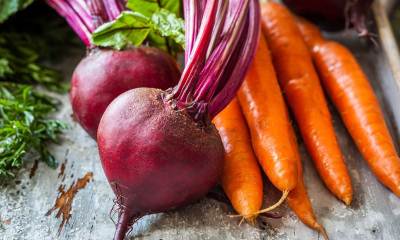

You need to store carrots in a separate container. It cannot be mixed with other root vegetables. However, there may be vegetables nearby such as:
- potatoes;
- beet;
- kohlrabi;
- onion;
- Jerusalem artichoke;
- radish.
The worst neighbor of carrots are apples, which secrete substances that contribute to the rapid ripening and spoilage of all vegetables that are located in the immediate vicinity.
You can read about the joint storage of beets and carrots here and here.
Carrot varieties that keep well
When deciding how to save carrots for the winter, you need to find out which varieties of root crops will lie until spring. According to the duration of the growing season (the time from the moment of emergence to the ripening of the crop), carrot varieties are: early ripening, mid-ripening, late-ripening. Early ripening crops grow short root crops, they are not stored and are consumed in the first place.
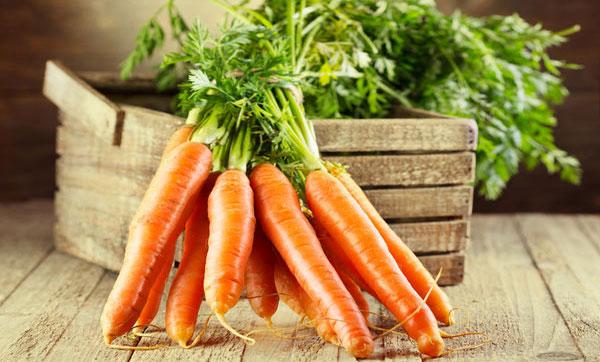

The exception is the popular varieties Alenka, Bangor - they can lie until spring. The choice of such plants may be caused by the condition of the soil at the site. According to the observations of gardeners, only varieties with a short root crop feel comfortable on loams with a small thickness of the cultural layer.
Carrots of medium ripeness will generally last no more than 4 months. But in this group there are varieties with good keeping quality: Losinoostrovskaya, Red giant, Vitaminnaya, Shantane, Samson.
More often, the harvest of late-ripening crops is laid in the cellar. They are stored for a long time without loss of taste and weight. These vegetables are large and conical in shape. The following varieties are prepared for the winter: Queen of Autumn, Vita Longa, Flaccoro, MO.
The grown crop should not be lost. The organization of careful harvesting and storage in optimal conditions will keep the carrots tasty and healthy.
Problems and solutions
Problems that can be encountered when storing carrots and how to fix them:
- Withering. It is necessary to increase the humidity level in the cellar. To do this, you need to take care of proper ventilation. Spraying water with a spray bottle or placing buckets of liquid can be a temporary measure.
- Mold on the crop... This happens when there is excessive moisture. You can cope with the problem if you put a bag of quicklime in the cellar.
- Rotting. Why do carrots rot? Most likely, a sick vegetable got into the container. In this case, the entire crop must be sorted out, damaged roots removed and stored again.
How to store carrots in winter
Before storing carrots for the winter, you need to sort them. Storing carrots for the winter will be successful if you choose:
- fully ripe roots,
- without signs of rot, disease and various flaws (for example, it is impossible to store a carrot eaten by a bear or a cut carrot);
- varieties must be suitable for long-term storage;
- coarse carrots with thick skin are stored better than tender and juicy carrots (these varieties should be eaten first).
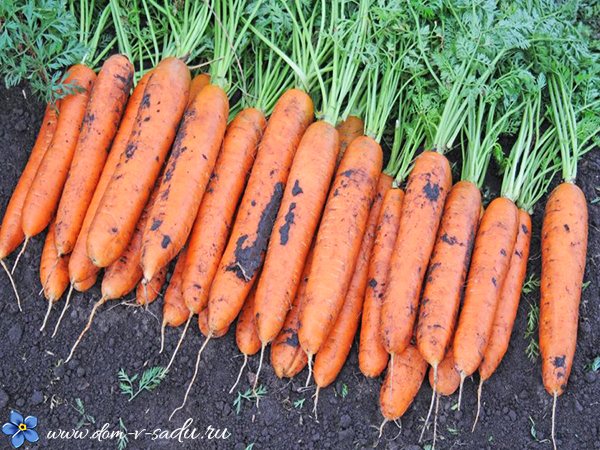

Helpful information
Tips to extend the shelf life of vegetables:
- Before harvesting carrots in the cellar, they must not be peeled. Removing the skin will quickly deteriorate.
- You should not completely peel carrots from the ground, and even more so, you should not wash them.
- The crop must be sorted out regularly, removing spoiled fruits.
- If vegetables are stored in boxes, the height of the embankment in them should not exceed 1 m.
Features of choosing carrots for storage
The success of long-term storage in the cellar is laid even at the initial stage of the correct choice of carrots. This means that it is necessary to adhere to some rules, not only when harvesting, but also when choosing a variety for planting. Most often, either mid-ripening or late-ripening varieties are chosen for planting, the collection of which usually begins in mid-September and lasts until mid-October. Harvesting is best done in warm and dry conditions.
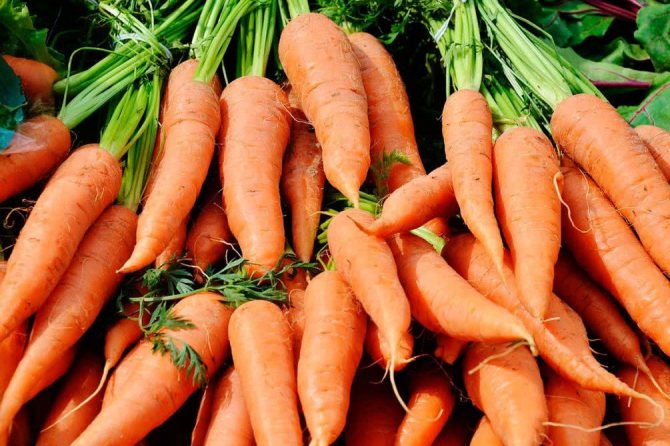

It is best to get the root crop out of the ground using the tools at hand, in particular, you can use a pitchfork or a garden shovel. When harvesting, they carefully adhere to the tops to avoid scratches or any other damage that will negatively affect the shelf life. The entire period before laying vegetables in the cellar (1-2 weeks), carrots are dried in a dry, spacious place at a temperature of + 13… + 15 ° C - this period is called quarantine.
When to dig carrots
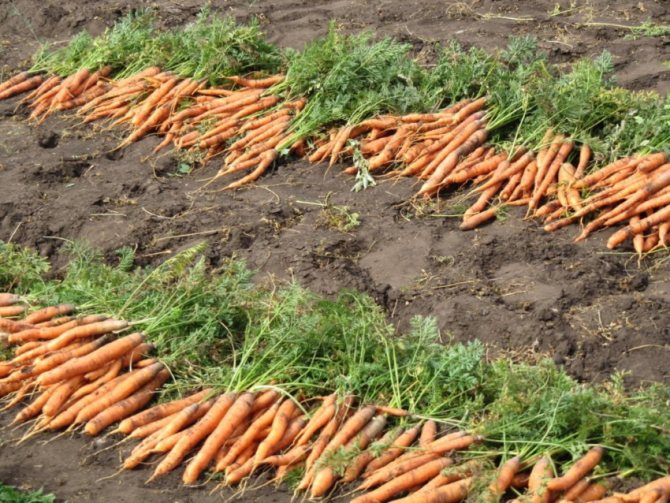

You can also dig up unripe carrots for soup or roast, anyway it will be used for its intended purpose immediately. Only fully ripe vegetables should be sent for storage. They must accumulate a sufficient amount of nutrients, in particular, sugars. Then the fruits will be juicy and sweet, moreover, they can be stored for a long time. Harvesting early without ripening will result in lower-tasting carrots. And she will not lie for a long time.
On the other hand, overexposing carrot beds is also not worth it. Then there will be an excess of sugar, which is immediately "pecked" by various pests. So there is a risk of sending vegetables for storage along with a carrot fly. They will also become a tasty bait for rats and mice. They also love to taste the sweet orange pulp.
Even at the stage of acquiring seeds, pay attention to the timing of the ripening of the crop. In early and late varieties, they differ significantly. Although the culture itself will tell you when it is time to start digging. After the underground part of the plant matures, the aboveground one begins to gradually die off. Yellowing of the lower leaves will be a signal for harvesting.
Selection of root crops for storage
Before sending vegetables for storage, they must be sorted out and prepared. Dried carrots need cleanse dirt and dirt... To do this, gently wipe it with gloved hands. Don't knock on vegetables on the ground and do not drop them to avoid damage.
Thoroughly go through the entire crop... Vegetables with signs of spoilage (dark spots, soft spout or spine) and damaged (with cuts, scratches or breaks) are subject to rejection. Remember, even one spoiled root vegetable can lead to infection and destruction of the entire crop.
Choose firm, ripe and healthy carrots of suitable varieties for storage.
Best preserved are "Moscow Winter", "Nantes 4", "Shantane", "Nigel", "Samson", "Cascade", "Vitamin 6". Such varieties as "Parisian Karotel" and "Amsterdamskaya" are not subject to long-term storage.
Having selected vegetables unsuitable for storage, sort the rest are in size. It is recommended to use small carrots first, then medium and then large. This requirement is due to the fact that large roots are stored better and longer.
After sorting, the tops of the carrots being sent for storage must be cut with a knife or scissors. Leave the "tail" 2-3 cm.
Varieties suitable for long-term storage
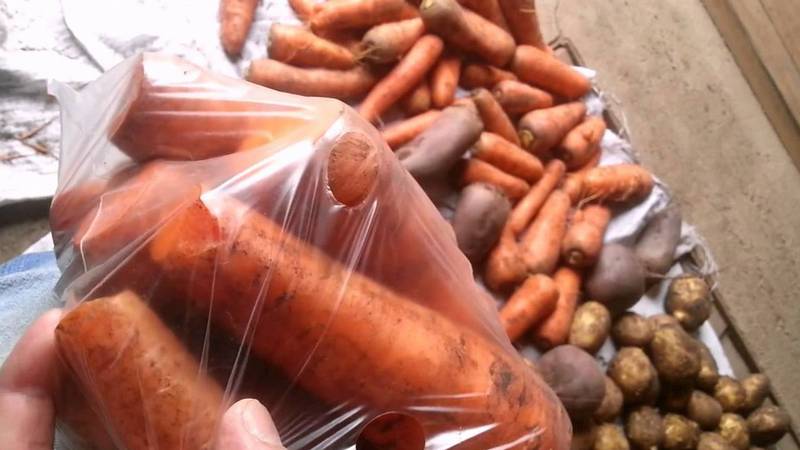

To save the harvest longer, mid-season and late varieties are planted. Important characteristics of the culture:
- growing season - from 115 days;
- lack of predisposition to major diseases of culture;
- low risk of crackling;
- suitability for any climate.
Nantes 4
It takes about 120 days to ripen root crops with a length of about 20 cm. If you plant the seeds of this variety in May, then in September they are already harvesting. With a lack of time, carrots are left in the ground until October. Vegetables are stored until February. 5-6 kg are collected from 1 m2.
Samson
Mid-season variety, easy to care for, suitable for any soil and climate. Ripens in 110-120 days from the first shoots, is stored until May next year. The average length of carrots is more than 20 cm, weight is 125–150 g. The yield is high - up to 762 kg / ha.
Chance
A mid-season variety, 110 days after planting, gives juicy marketable root crops. Productivity - 5 kg / m2. When growing, it requires sufficient light, loose soil with a large percentage of humus. Vegetables are stored until March.
Autumn queen
Late variety, ripens 130 days after sowing. With proper care and application of fertilizers, root crops reach 25 cm in length, 85–230 g. Such carrots are stored until the new harvest without loss of taste and marketability. Productivity - 265-576 kg / ha.
Dolyanka
Late Dolyanka retains the marketable appearance and taste of carrots until spring. Vegetables ripen 140-150 days after sowing. Root crops grow 15–22 cm long, weighing 95–145 g. Marketable yield of the variety is 243–372 kg / ha.
Karotan
Late maturing Karotan grows best in well-lit, loose soil. The harvest is stored until the next season, vegetables grow at least 25 cm long. The time from the first shoots to maturity is 135–150 days. Productivity - up to 405 c / ha.
Vita Longa
The variety is resistant to black and gray rot, has high transportability. It takes up to 160 days for carrots to fully ripen, they remain until the new season. Root crops grow up to 30 cm in length, weighing up to 130 g. Productivity - 200-490 kg / ha.

